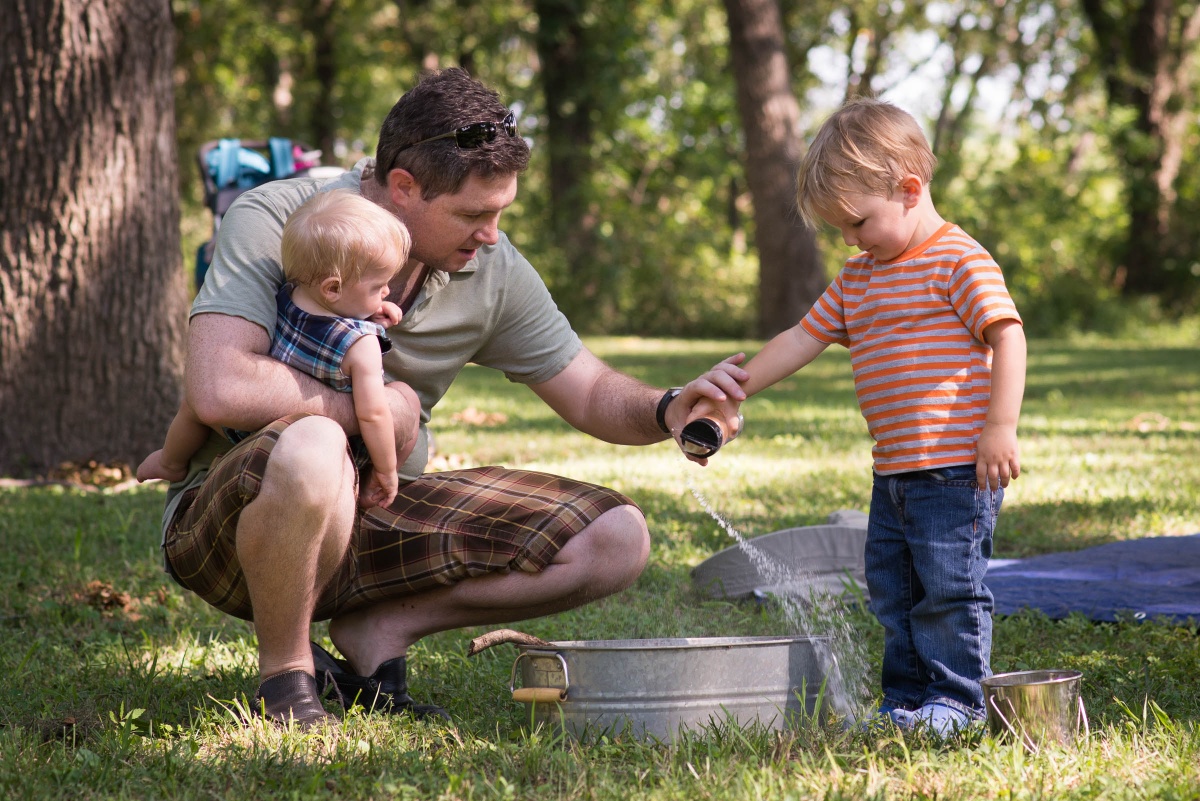For adults, a schedule helps make the days and weeks feel easier to manage. For kids, having a routine is transformative. They feel comfort in knowing what to expect when, and they are better able to focus their minds on what they are doing when they don’t have to worry about what is coming next.
Each family needs to find the schedule that best supports their team and what they value most. Here are some tips and tricks to help set up a schedule that supports outdoor play and works best for your family this summer.
If it ain't broke, don’t fix it.
If you have a great schedule going this spring, stick with any parts that you think really work for you and your kids.
If it’s new, kids need time to learn it.
Whenever you introduce a new or adapted schedule, it may be a bit wonky for a while until kids learn it and it becomes routine. So, it’s important to give any new schedule at least a few weeks for kids to learn it before you walk away from it.
Focus on schedule anchors.
To set up a responsive schedule that really works, focus on your anchors—the few, most important things you do each day. Even though Google calendar lets us plan down to 15-minute increments, life with young kids needs longer stretches of time and much more flexibility. Some experiences catch fire and kids want to stick with them for hours. Other days are...eh...just one of those days. Plus, transitions between “activities” demand a lot from kids.
Below are the anchors that have helped us most. Once you’ve identified your anchors, place them at the same time every day, then let the rest of the activity flow around them!
Anchor #1: Bed and Wake Times—Studies and experience tell us that regular bedtime and wake times for kids, when it’s possible to keep them, result in improved behavior and readiness to engage in new experiences. Once established, they also reduce parent stress. Hurrah!
Anchor #2: Meal and Snack Times—Like sleep, regular chances to eat can also help calm and steady kids’ minds, bodies and spirits. Setting regular snack times every two hours cuts down on the constant asks for snacks and helps kids stay content and even more ready for “real food” at meal times. If you eat dinner together, or as kiddos eat, ask kids to talk about their day. See our summer rituals article for ideas!
Anchor #3: Circle Time—Start your day with a circle time where you can connect, signal that this day is special and help kids focus on what is to come. See our Rituals section for ideas about what circle time rituals might work best for you.
Anchor #4: Play Times—Blocks of play time can vary in length by age, activity and just how your child rolled out of bed each day. To follow are some things to consider when you set aside times of the day for play:
- Mornings are magic—Most kids tend to enter the day with great reserves. Summer mornings are also cooler than afternoons. So, use the morning for circle time and to invite kids into new play experiences. Mornings are also great for bigger energy adventures like trips to play in the park or hikes.
- 30-minute minimum—Research tells us that children ages 2 and up need at least 30 minutes in an activity to fully engage in play. But, we know that kids can go far longer, and that it varies. Just block off plenty of time and stay flexible and responsive to your child.
- Afternoon “play” time—It’s summer, so the day really can—and should—be filled with play. Use afternoons as free play time in which kids can continue with a play activity they enjoyed that morning (like the Camp Tinkergarten activity of the week) or spend time on one of their favorite ways to play (see Play centers for ideas!)
Anchor #4: Story Time—Whether you read to your child, share a recorded read-aloud, or join together to each read in a shared space, making time for stories and reading is calming and connecting—plus it supports imagination and literacy skills.
Anchor #5: Rest Time—Many young children nap, but parents and kids alike benefit from a daily dose of quiet and solitude. Siblings also really need breaks from one another. Establish a resting spot for each person in the family, then pick a 30-minute block in the day (e.g. after lunch) for “rest” or “you time”—whatever label sounds best to your team. Kids can rest by sleeping, rocking, listening to a story, making art, flipping through picture books—whatever they enjoy and find soothing.
Letting Go
Perhaps the best approach is simply to suspend and lean into the freedom and flexibility of summer—just welcome the sweet chaos that can come along with such a wild and free time. Fall will be here before you know it!

